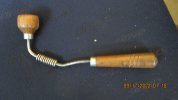After my other post, I decided to make sure my fancy stock actually allowed the barrel to free-float. It didn't. I carefully sanded the barrel channel with sockets wrapped with sandpaper. I read somewhere that I should be able to slide three sheets of copy paper freely between the stock and barrel. I am there except for the portion nearest the action. I would say it is one paper thickness gap there.
What say you? Three thicknesses all the way? Or is one good?
I want to glass bed the action because it can still move forward and back with the screws slightly loose.
What say you? Three thicknesses all the way? Or is one good?
I want to glass bed the action because it can still move forward and back with the screws slightly loose.

